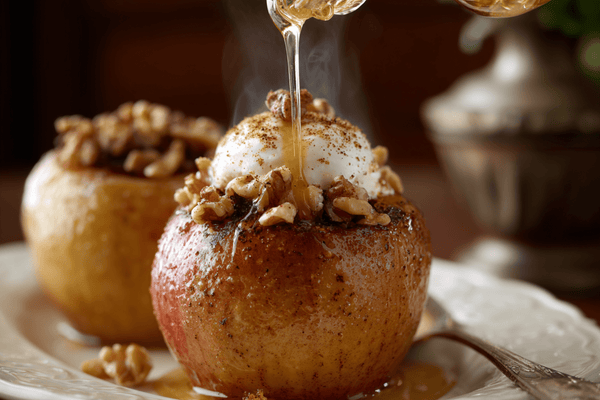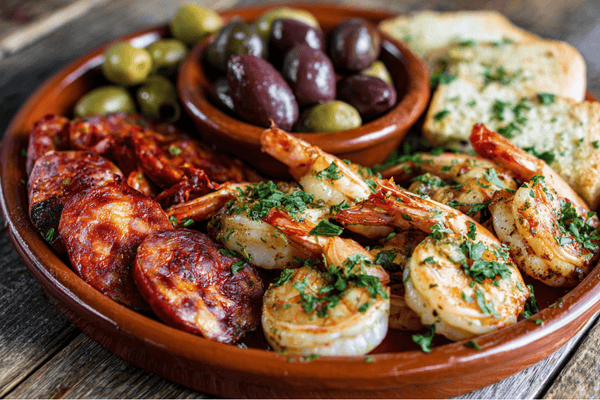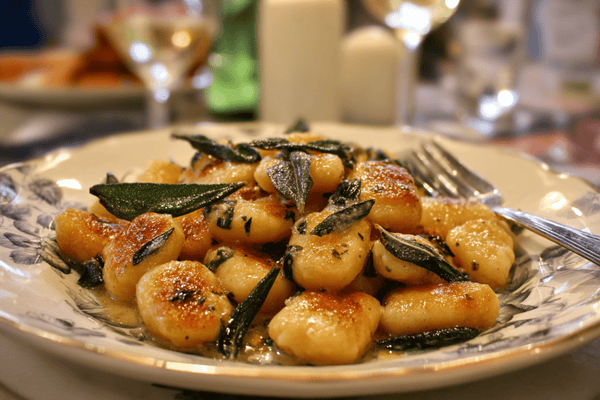 When you’re shopping for kitchen knives, or any other type of knife, for that matter, one of the things you will often come across is the bevel of the knife. If you’re new to buying knives then this can feel a little confusing from the off. So when it comes to actually deciding between single bevel vs double bevel, it can feel incredibly difficult.
When you’re shopping for kitchen knives, or any other type of knife, for that matter, one of the things you will often come across is the bevel of the knife. If you’re new to buying knives then this can feel a little confusing from the off. So when it comes to actually deciding between single bevel vs double bevel, it can feel incredibly difficult.
But it doesn’t need to be.
A single bevel knife tapers only on one side of the knife blade whereas a double bevel blade tapers on both sides. Single bevel knives are more delicate and typically used for precise tasks. On the other hand, a double bevel knife is far more robust and can be used for more demanding cutting jobs.
If you’re trying to find the best kitchen knife for you and are struggling to choose between single bevel and double bevel, this guide will simplify everything. By the end, you’ll understand the differences between the two and how each knife should be used.
Table of contents
What Is a Knife Bevel?
There is quite a bit of jargon to learn when it comes to buying Japanese knives and the bevel is something that newbies often find difficult to grasp. A lot of people confuse the bevel with the edge of the knife and while we will explain that in more detail shortly, you first need to understand that they are not the same thing.The knife bevel is the surface ground down by the knifemaker which makes the knife edge. If you take a close look at one of your knives, you will notice that there is a very slight, yet noticeable angle on the side. This may be on one side, meaning it’s a single bevel knife or both sides if it is a double bevel knife.
Knife bevels are ground to different angles but if you have a smaller angle then this means that the knife will generally be sharper.
Don't Confuse the Bevel With the Edge
As we have already touched upon, the knife edge is NOT the same thing as the bevel and this is where a lot of people get confused.The edge refers to the sharp part of the knife; the bit you use for cutting. This is located at the bottom of the blade and runs from the heel all the way to the tip. However, the bevel refers to the angle that leads up to the edge and is there to form the edge.
All About Double Bevel Knives
 You’ll find that pretty much all European knives feature a double bevel. Double bevel knives are incredibly common in most domestic kitchens and one of the main reasons for this is that they are so robust. The reason for this is that there is more steel behind the edge so you get something far stronger and more durable. Additionally, the edge is not as likely to be rolled over when you’re cutting through tougher foods or as the blade makes contact with the cutting board.
You’ll find that pretty much all European knives feature a double bevel. Double bevel knives are incredibly common in most domestic kitchens and one of the main reasons for this is that they are so robust. The reason for this is that there is more steel behind the edge so you get something far stronger and more durable. Additionally, the edge is not as likely to be rolled over when you’re cutting through tougher foods or as the blade makes contact with the cutting board.However, you have to keep in mind that this extra steel isn’t always a good thing. It naturally makes the blade edge much bigger so you won’t get the same kind of precision you would when using a single bevel knife. It also affects the angle when sharpening double bevel knives to maintain their sharp edge, but this is something we will cover later in this guide.
When using a double bevel knife, the blade will cut through the food and push it away from both sides at the same time. The result is that the food falls away from the knife easily.
That said, it really does depend on the type of food you are working with. If the food is particularly wet, soft or sticky, you may find it more difficult to cut with a double bevel knife. This includes things like cheese, meat and soft veggies as the food tends to stick to one side of the blade. The result is a cut that isn’t as smooth or straight. While this is annoying, it doesn’t really affect how useful you’ll find a double bevel knife so it’s not something we’d say should put you off.
One of the best things about double bevel knives and probably another reason that they’re so popular is that anyone can use any double bevel knife. With single bevel blades, you have to buy one that’s made for your orientation; left-handed or right-handed. Whereas, with a double bevel blade, they’re ambidextrous.
Uses of a Double Bevel Knife
While double bevel knives do have a much larger edge than their single bevel counterparts, this doesn’t mean that they’re not extremely sharp and effective at cutting. What’s brilliant about them is that they’re so robust so they’re considered to be multipurpose knives.When shopping for knives, you’ll normally come across more double bevel blades than single ones purely because they are so versatile. You’ll be able to cut meats, poultry, and hard and soft vegetables and use the knife for peeling.
In reality, you can use a double bevel knife for anything you’d use a single bevel blade for. The only real difference is that the cut might not be as neat. But then, if you’re not a stickler for presentation, this probably won’t be the end of the world.
All About Single Bevel Knives
 You probably won’t see as many single bevel knives in domestic kitchens as you would double bevel blades. These are normally found in professional settings but that doesn’t mean you can’t have them at home. There are plenty on the market but you should keep in mind that these types of knives are usually reserved for specific cutting tasks.
You probably won’t see as many single bevel knives in domestic kitchens as you would double bevel blades. These are normally found in professional settings but that doesn’t mean you can’t have them at home. There are plenty on the market but you should keep in mind that these types of knives are usually reserved for specific cutting tasks.Where the double bevel knife is much more multipurpose, single bevel blades are not which is why you won’t find as many of them. After all, most domestic chefs are looking for convenience. But one of the main advantages of a single bevel knife is that it is much more precise and creates a vastly more neat and clean cut.
The thing about single bevel knives is that it is possible to sharpen them to a much smaller angle. In turn, this gives them a very sharp and fine edge which is why they are so precise. But on the downside, this fine edge is much more delicate and you may find that it rolls over when cutting. Moreover, if you cut a lot of tough foods with a single bevel knife, you’ll end up sharpening it a lot more frequently.
Because of how delicate the single bevel blade is, it is normally kept for more precise cutting tasks. What’s more, you won’t find a single bevel blade that’s designed for both left and right-handed use. Instead, these knives are made for one orientation or the other so when shopping, you need to make sure that you choose a knife that is designed for your dominant hand.
With right-handed single bevel knives, the angle is on the right side which means that, as you cut through the food, it will fall away and won’t resist the knife. However, if you were to use this knife with your left hand, you’d find that the bevel ends up pushing the piece of food that you’re holding in your other hand and there will be a lot of resistance.
Where double bevel knives might struggle with certain types of food, single bevel knives really excel. They will cut far more cleanly through wet or soft foods because of the angle and how sharp they are. The food will just fall away from the knife instead of sticking to it as it might with a double bevel knife.
When you’re using a single bevel knife, you will find that it’s much easier to cut foods and you won’t need to put in as much effort.
Uses of a Single Bevel Knife
 As we understand by now, single bevel knives are normally used when you need to make a precise or clean cut. For the most part, the only reason you would want to do this would be to make sure that the food was well-presented. This is normally why single bevel knives are favoured in professional kitchens and not so much in domestic settings.
As we understand by now, single bevel knives are normally used when you need to make a precise or clean cut. For the most part, the only reason you would want to do this would be to make sure that the food was well-presented. This is normally why single bevel knives are favoured in professional kitchens and not so much in domestic settings.These knives come in very handy when cutting things like sashimi and sushi where presentation has to be spot on. What’s more, Japanese chefs will tell you that, if you use a double bevel knife to cut such foods then this can affect the flavour.
If you want to make wafer-thin cuts of certain types of vegetables then a single bevel knife should be your go-to choice. When buying a single bevel knife, you’ll notice that it’s almost always a Japanese knife.
A Note On Sharpening Angles
When it comes to sharpening your knives, you have to take into account the bevel as this will impact how you sharpen the cutting edge of the blade.Single bevel knives typically have a sharpening angle between 15 and 17 degrees. This gives you a much finer edge that’s incredibly sharp and ideal for making those delicate cuts that single bevel knives are renowned for.
When you’re sharpening a single bevel knife, you have the benefit of not having to do as much work. This is because you only need to sharpen one edge but you should keep in mind that there is a degree of skill required to sharpen a single bevel knife. You will need to practise especially if you are using a whetstone. That said, it’s worth doing since whetstones are largely considered to be the best way to sharpen a knife.
Double bevel knives have a larger sharpening angle that’s typically anywhere between 20 and 30 degrees on either side. It is possible to sharpen the knife to an even greater angle if you’re planning to use it for things like very dense meat or veggies as this will increase the durability of the blade.
Final Thoughts
There’s a lot to think about when choosing the right knife for the job and one thing you’ll stumble upon time and time again is the bevel. There are single and double bevel knives and while both have their pros and cons, they’re both useful for different things.Double bevel knives have an angle on both sides while single bevel knives only have a ground angle on one side. For domestic use, you’d usually opt for a double bevel blade as they’re a more versatile kitchen knife, whereas a single bevel knife is usually designed for specific and delicate tasks.
FAQ
Q: Are single or double-bevel knife better?
A: It really depends on what you're using the knife for and what you prefer. A double-bevel knife, also known as a symmetrical knife, is a knife that has a blade that is ground down on both sides to create a sharp edge. This makes it a good all-purpose knife because it can be used for slicing, dicing, and chopping. A single-bevel knife, on the other hand, is sharpened on only one side of the blade, which makes it better for certain tasks such as slicing fish or meat. Some people prefer single-bevel knives because they allow for more precise cuts, while others prefer double-bevel knives because they are more versatile. Ultimately, the best choice is the one that works best for you and your needs.
Q: Is a common chef's knife single-beveled?
A: Most common chef's knives are not single-beveled. A chef's knife, also known as a cook's knife, is a versatile knife that is designed for a wide range of tasks such as chopping, slicing, and dicing. It is typically double-beveled, which means that it is sharpened on both sides of the blade to create a sharp edge. This makes it a good all-purpose knife that can be used for a variety of tasks. Some chef's knives may be single-beveled, but this is not very common.
Q: Are Japanese knives single or double-bevel?
A: Many Japanese knives are single-beveled, but not all of them are. Single-bevel knives are common in Japanese cuisine because they are well-suited for the precision cutting techniques used in Japanese cooking. Single-bevel knives are sharpened on only one side of the blade, which allows for more precise cuts and makes them better for certain tasks such as slicing fish or meat. However, not all Japanese knives are single-beveled. Some, such as Santoku knives, are double-beveled and can be used for a wider range of tasks. Ultimately, the type of bevel on a Japanese knife depends on the specific knife and its intended use.


